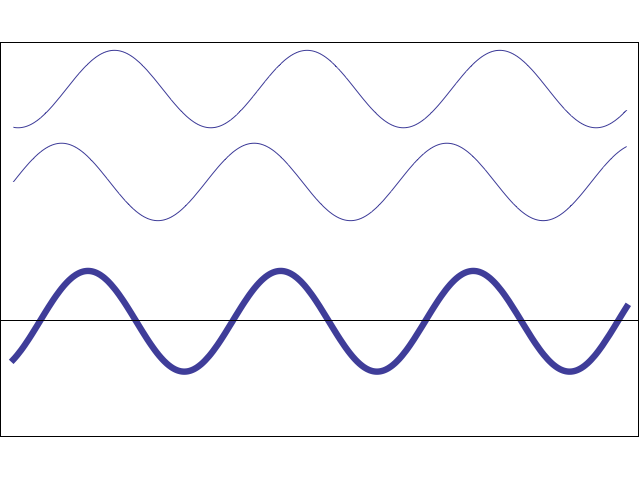Second, bats are awesome. They are the acoustic equivalent of flying dolphins. In terms of bad-ass acoustic ecology (because that's a thing), they are definitely at the top of the heap. As I'm sure most of you know, bats use echolocation to find their prey. They emit short chirps that bounce off solid objects and come back to their ears. Using the time difference between when they produced the chirp and when they hear the echo, bats are able to tell how far away their food is.
Imagine you are a Mexican free-tailed bat and you are hunting bugs with 80,000 of your closest friends. It turns out that some of your fiends are jerks. They are jerks because they produce chirps out of phase with your own echolocation signal. The two signals can either confuse the first bat or, literally, block the the second signal by destructively interfering with it. Either way, the bat's echolocation signal is effectively "jammed".
Let's talk about the second idea, that the two signals can cancel each other out. Below is cool video by Dan Russell of Penn State showing how two sounds of the same frequency can either destructively (net sound is 0, or silence) or constructively (net sound is the sum of the two sounds).
 |
| Waves in and out of phase, or constructive and destructive interference. From Dan Russell |
 |
| Double bounce, similar to two sound wave interact. Constructive interference for the idiot in the net, destructive interference for the idiot who fell over. |
Back to the bats, when the bat (A) goes in for the kill, she is producing echolocation chirps faster and faster because the time it takes the sound to bounce off the target and return to her is decreasing and decreasing. Bat B, hearing the chirps decides to 'jam' bat A's sound. So, bat B produces sounds in the same frequency but slightly offset in time from bat A. Now, Bat A has a hard time telling which sounds are her echolocation clicks and which sounds are bratty bat B's jamming signal.
It turns out this is a pretty effective way of preventing your neighbour from getting food. The researchers found that when they played the "jamming" signal to bats about 85% of the animals missed the target (a moth tied to a string).
Lastly, if you want to play with this idea yourself you can use the following equation to mess about with superposition
y1(x,t)=sin(phase1+w*t)
y2(x,t)=sin(phase2+w*t)
Y(x,t)=y1+y2
Where phase is going to be 0-360 degrees (or 0-2π radians), w (omega) is your frequency and t is the time period. You can toss these three equations into Excel and mess around with the outputs.. even...oooo.. graph it!
Have fun and thanks for reading!
*Science news, at the very bottom of the Google News page. To find that section scroll down past the latest Kardashian news, little bit more, nope beyond the football updates. Yes! There you go just above the "help" and "send feedback" links.
No comments:
Post a Comment
Comment forum rules.
1. Be accurate
2. Cite your sources
3. Be nice
Comments failing to meet these criteria will be removed